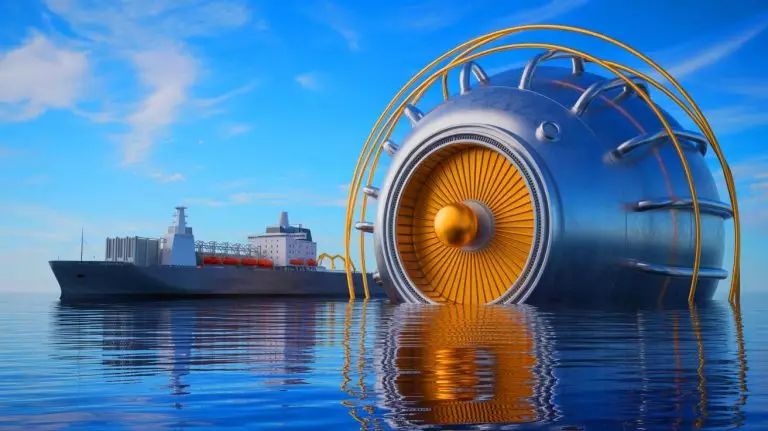| IN A NUTSHELL |
|
The unveiling of a new nuclear reactor design marks a significant step in the journey toward sustainable energy solutions. Developed by a coalition of European firms, this next-generation reactor is poised to revolutionize the maritime industry. With its innovative lead-cooling system and compact design, it promises to address the growing needs for clean energy in maritime applications and beyond. This groundbreaking development not only exemplifies technological advancement but also highlights the strategic collaboration among industry leaders to tackle pressing environmental challenges.
Revolutionizing Maritime Energy with a New Vision
The unveiling of the TL-40 liquid lead-cooled nuclear reactor represents a monumental shift in how nuclear energy can be harnessed for maritime purposes. Spearheaded by Newcleo in collaboration with industry giants Fincantieri and Pininfarina, this innovative project seeks to redefine the image and application of nuclear power in the modern world. Designed with an open-section approach, the reactor offers an immersive experience, allowing individuals to witness firsthand the intricate workings of nuclear energy. This transparency not only fosters understanding but also builds trust in nuclear technology. At its core, the project reflects a harmonious blend of technological innovation, industrial expertise, and visionary design, challenging the conventional perceptions of nuclear energy.
As Pierroberto Folgiero, CEO of Fincantieri, emphasizes, the project is a response to the urgent need for ecological transition and energy security. By leveraging their expertise in complex naval engineering, the companies involved are paving the way for a sustainable future. The reactor is not just a concept but a tangible solution that could transform the maritime sector, making it a pivotal player in the global energy landscape.
The Pioneering Lead-Cooling System
At the heart of the reactor’s innovation is its lead-cooling system, a remarkable feature that ensures safety through passive mechanisms governed by the laws of physics. This system minimizes the risk of nuclear incidents, offering a level of safety that is unprecedented in the field. Furthermore, these advanced modular reactors are capable of eliminating nuclear waste from traditional reactors, transforming it into clean, cost-effective energy. This multi-recycling process not only addresses waste management issues but also contributes to the larger goal of decarbonizing energy systems.
Interactive visualization systems have been set up to demonstrate these processes, highlighting the reactor’s potential in decarbonizing maritime transport. The installation underscores the vast energy potential contained within existing nuclear waste stored in Europe, which could power the continent for centuries. Such innovations showcase the reactor’s role as a catalyst for a sustainable energy future, offering a glimpse into the possibilities of nuclear power in modern society.
Collaborative Efforts for a Sustainable Future
The collaboration between Newcleo, Fincantieri, and Pininfarina exemplifies the power of joint efforts in achieving groundbreaking results. Through this partnership, the companies have not only developed a new generation of nuclear reactors but have also set a precedent for future innovations in the energy sector. Stefano Buono, founder and CEO of Newcleo, articulates the vision of a new paradigm in nuclear energy—one that is clean, sustainable, and designed to serve communities.
This project moves beyond the large reactors of the past, introducing small, inherently safe reactors that promise abundant decarbonized energy. The emphasis on sustainability and progress reflects a commitment to environmental stewardship, setting the stage for a new era in nuclear power. The collaboration serves as a model for how industries can unite to address global challenges, fostering a future where energy is both plentiful and sustainable.
Implications for the Global Energy Landscape
The introduction of this next-generation reactor has far-reaching implications for the global energy landscape. By providing a reliable source of energy for maritime vessels and off-grid areas, it addresses critical energy needs while reducing dependency on fossil fuels. The reactor’s compact design and lead-cooling system make it a viable option for diverse applications, from powering ships to supplying isolated communities with clean energy.
As the world grapples with the impacts of climate change, innovations like these are crucial for driving the transition to sustainable energy. The reactor serves as a beacon of hope, demonstrating the potential of nuclear power to contribute to a cleaner, more sustainable future. By embracing such technologies, the global community can move closer to achieving energy security and environmental sustainability.
In an era where energy demands are ever-increasing, the development of innovative solutions like the TL-40 reactor is vital. This project not only showcases the possibilities of nuclear power but also sets a precedent for future advancements in the field. As we look toward a more sustainable future, the question remains: How will emerging technologies continue to shape the global energy landscape in the years to come?
Did you like it? 4.5/5 (30)






Wow, this is a game-changer for maritime energy! What challenges do you foresee in implementing these reactors on ships? 🚢
Interesting concept, but how safe can these reactors really be? We don’t want another Chernobyl! 😬
Thanks for the article, I hadn’t heard about this before. Looking forward to seeing how this develops!
Can these reactors be used on land as well, or are they strictly for maritime use?
Are these small modular reactors cost-effective compared to traditional energy sources?
Lead-cooling system? Sounds like something from a sci-fi movie! 🤖
Is nuclear really the way to go for sustainability? Feels like we might be trading one problem for another.